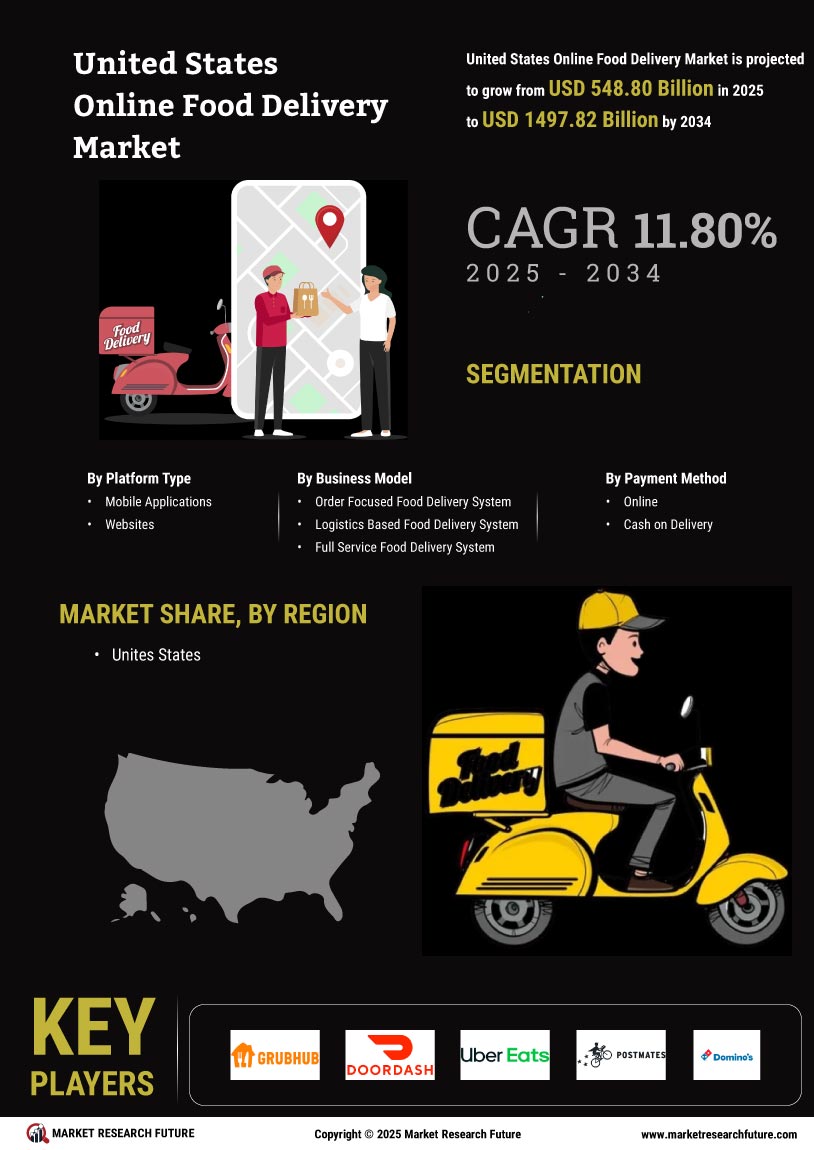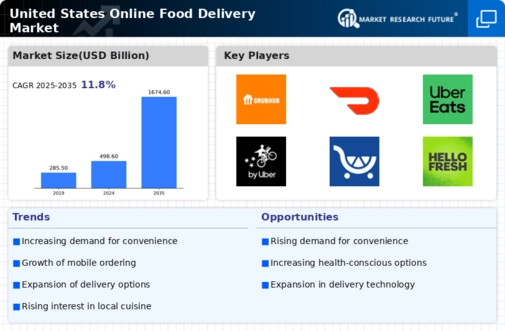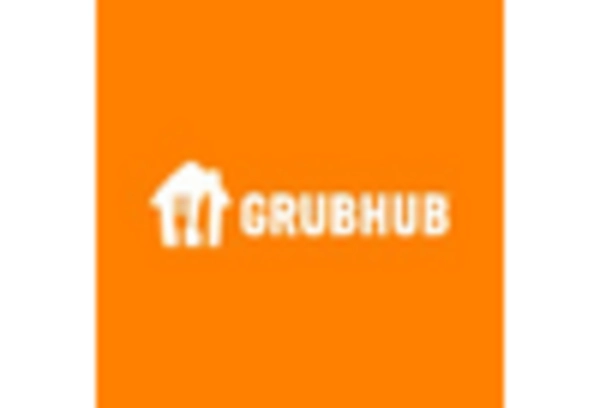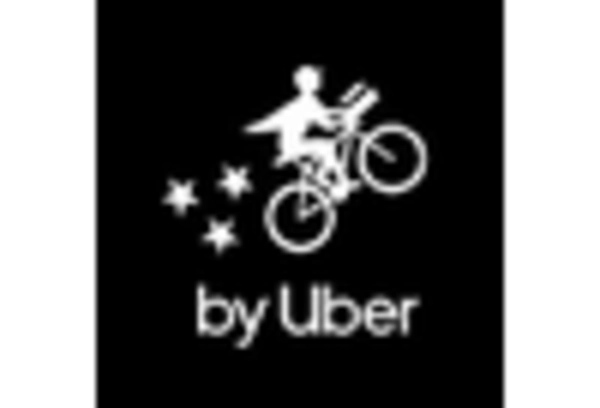Focus on Customer Experience
A pronounced focus on customer experience is emerging as a key driver in the online food-delivery market. Companies are increasingly prioritizing user-friendly interfaces, personalized recommendations, and responsive customer service to enhance overall satisfaction. Research indicates that 70% of consumers are more likely to return to a service that provides a positive experience. This emphasis on customer-centric strategies is likely to foster brand loyalty and repeat business, which are crucial for sustained growth. As competition intensifies, businesses that effectively enhance the customer experience will likely gain a competitive edge in the online food-delivery market.
Expansion of Delivery Options
The online food-delivery market is witnessing an expansion of delivery options, which significantly influences consumer choices. With the rise of various platforms offering diverse cuisines and meal types, consumers are presented with an array of choices that cater to their preferences. Recent statistics reveal that around 45% of consumers in the US utilize multiple delivery services, indicating a trend towards variety and flexibility. This expansion not only enhances customer satisfaction but also encourages competition among service providers, leading to improved service quality and innovative offerings. As the market evolves, the ability to provide a wide range of delivery options will likely be a critical driver of growth in the online food-delivery market.
Growing Popularity of Meal Kits
The online food-delivery market is experiencing a growing popularity of meal kits, which offer consumers a convenient way to prepare meals at home. These kits typically include pre-portioned ingredients and easy-to-follow recipes, appealing to those who desire home-cooked meals without the hassle of grocery shopping. Recent surveys indicate that nearly 25% of US households have tried meal kits, reflecting a shift in consumer preferences towards more interactive dining experiences. This trend not only diversifies the offerings within the online food-delivery market but also encourages consumers to engage with their food in a more meaningful way. As meal kits gain traction, they may become a significant driver of growth in the industry.
Increased Investment in Technology
Investment in technology plays a pivotal role in shaping the online food-delivery market. Companies are increasingly adopting advanced technologies such as artificial intelligence and machine learning to optimize delivery routes and enhance customer experiences. This technological integration is expected to improve operational efficiency, reduce delivery times, and ultimately increase customer satisfaction. Data suggests that businesses investing in technology can see a return on investment of up to 30% through improved logistics and customer engagement. As technology continues to evolve, its impact on the online food-delivery market will likely be profound, driving innovation and setting new standards for service delivery.
Rising Consumer Demand for Convenience
The online food-delivery market experiences a notable surge in consumer demand for convenience. As lifestyles become increasingly hectic, individuals seek quick and easy meal solutions. This trend is reflected in the data, which indicates that approximately 60% of consumers in the US prefer ordering food online rather than cooking at home. The convenience factor is further amplified by the proliferation of mobile applications that facilitate seamless ordering processes. As a result, the online food-delivery market is likely to continue expanding, driven by the desire for hassle-free dining experiences. This shift in consumer behavior suggests that businesses must adapt to meet the growing expectations for speed and efficiency in food delivery services.

















Leave a Comment